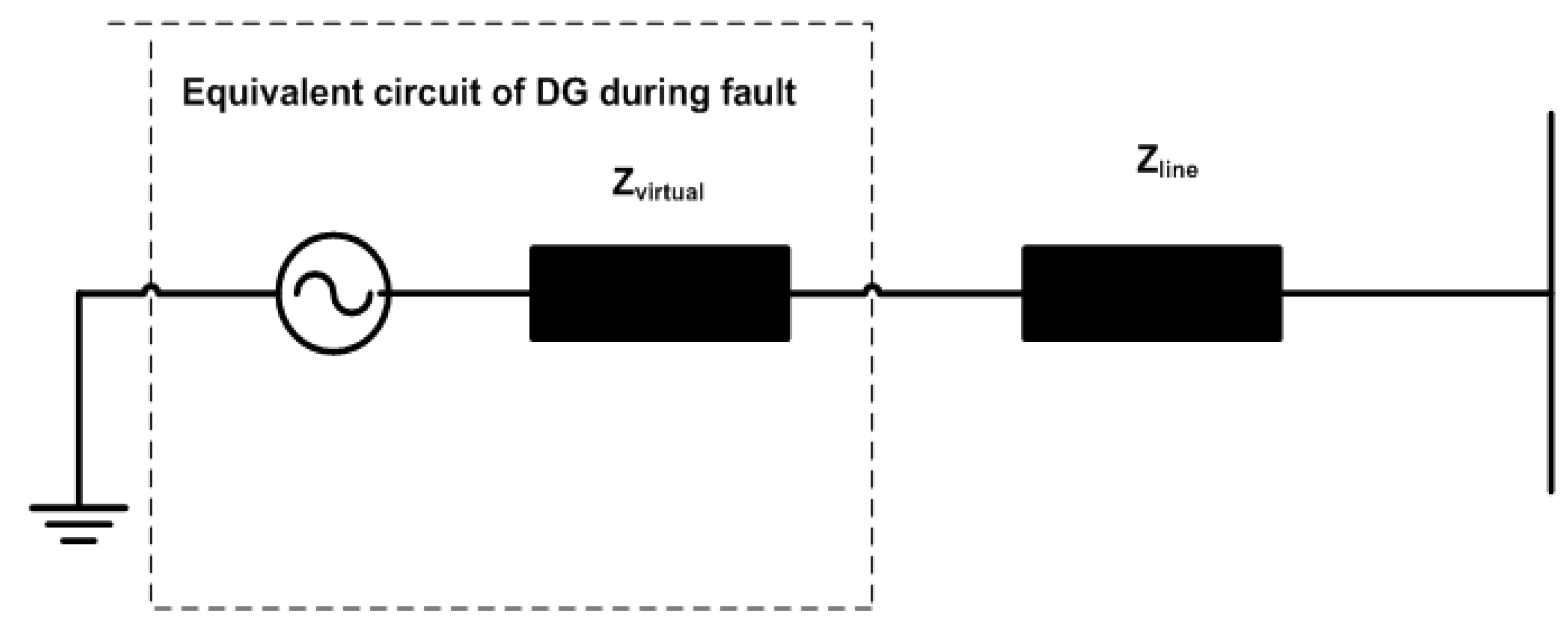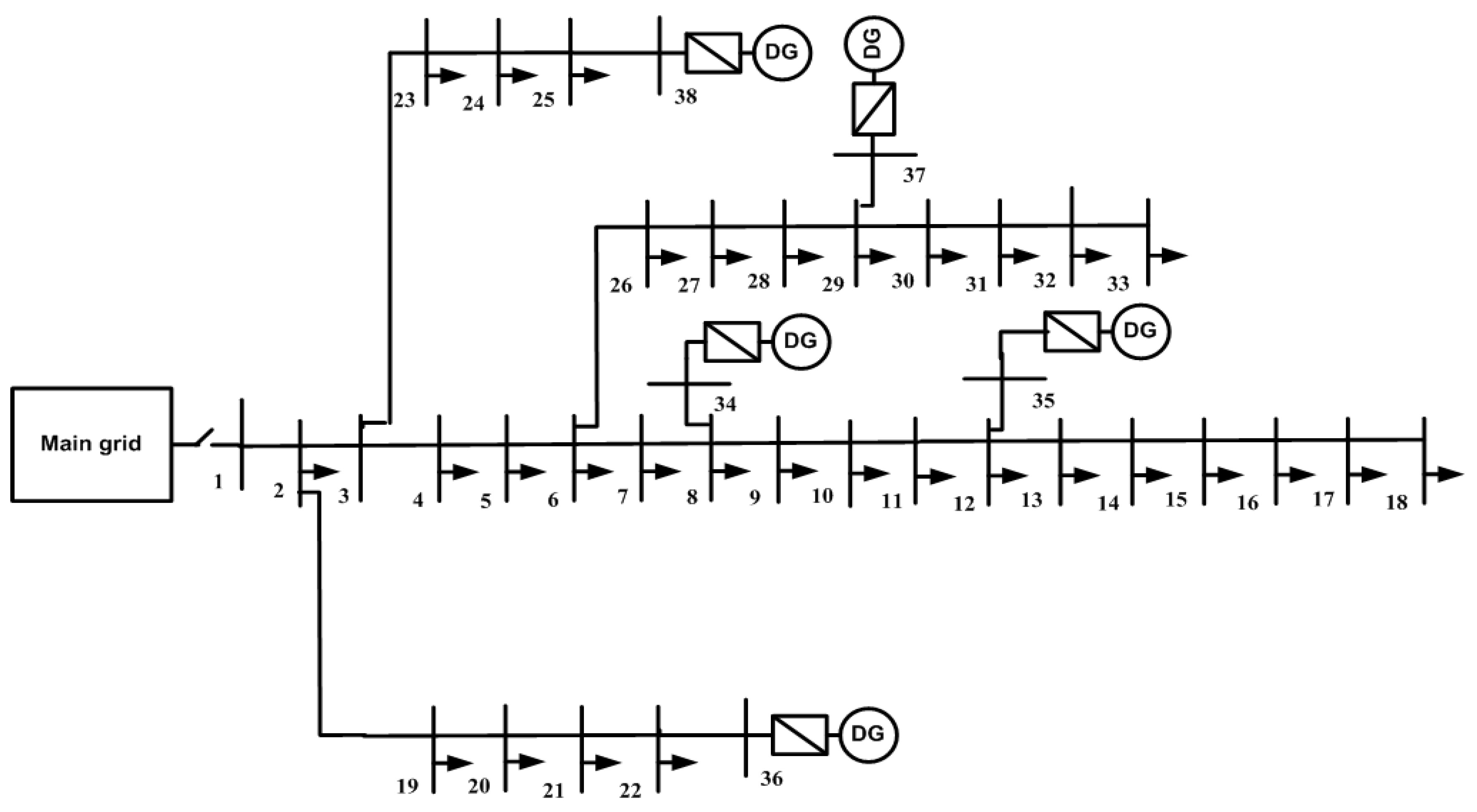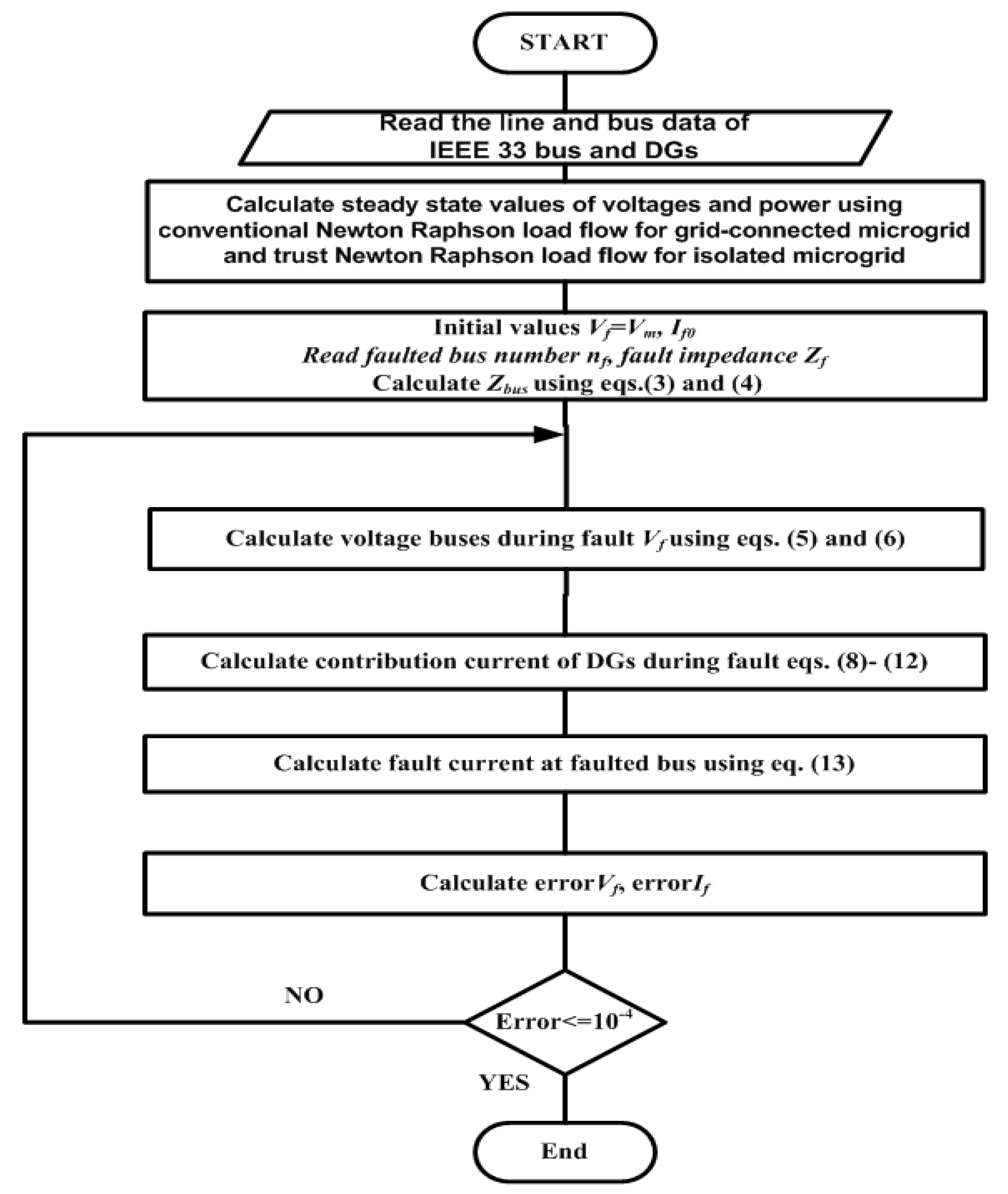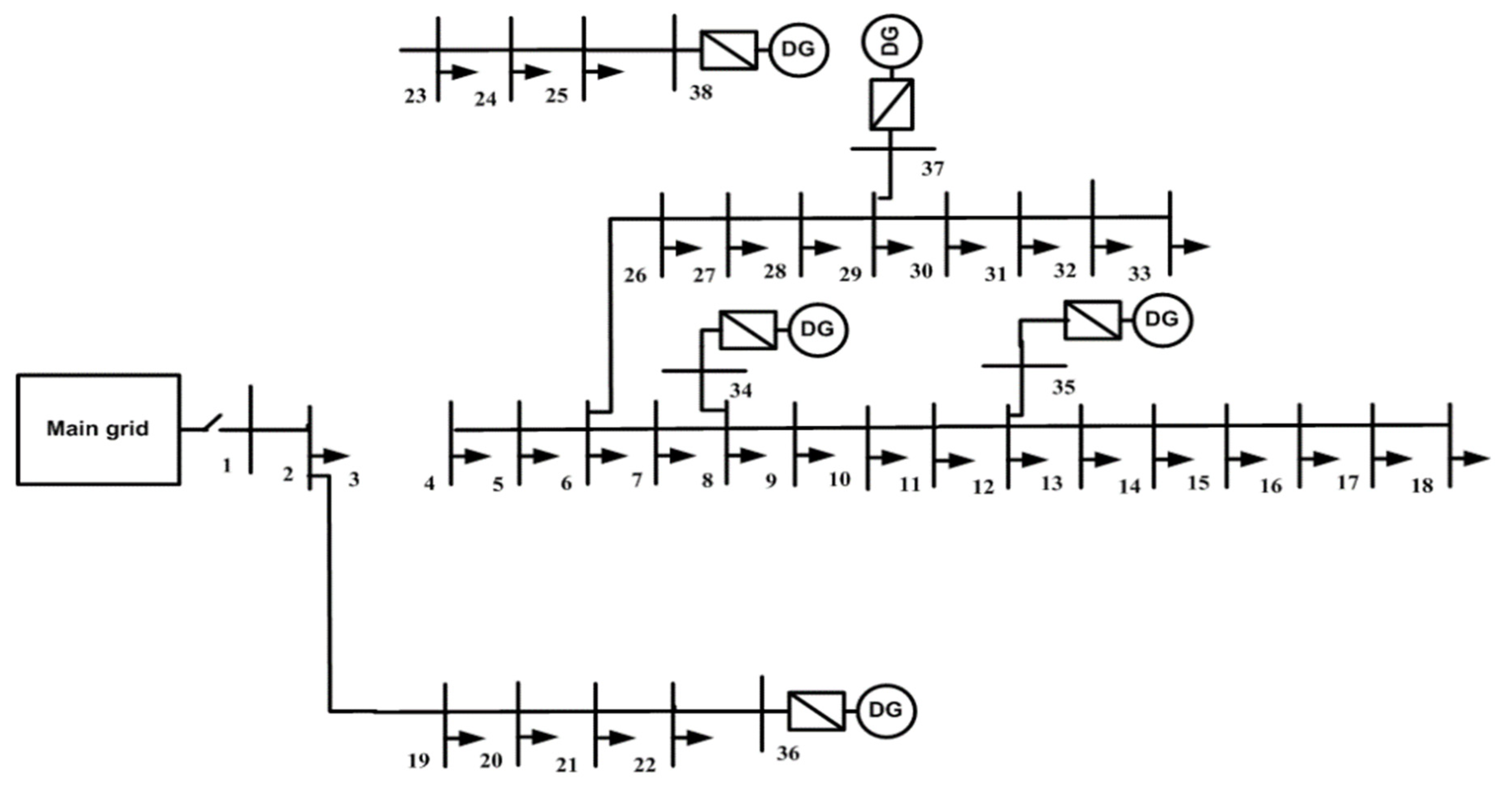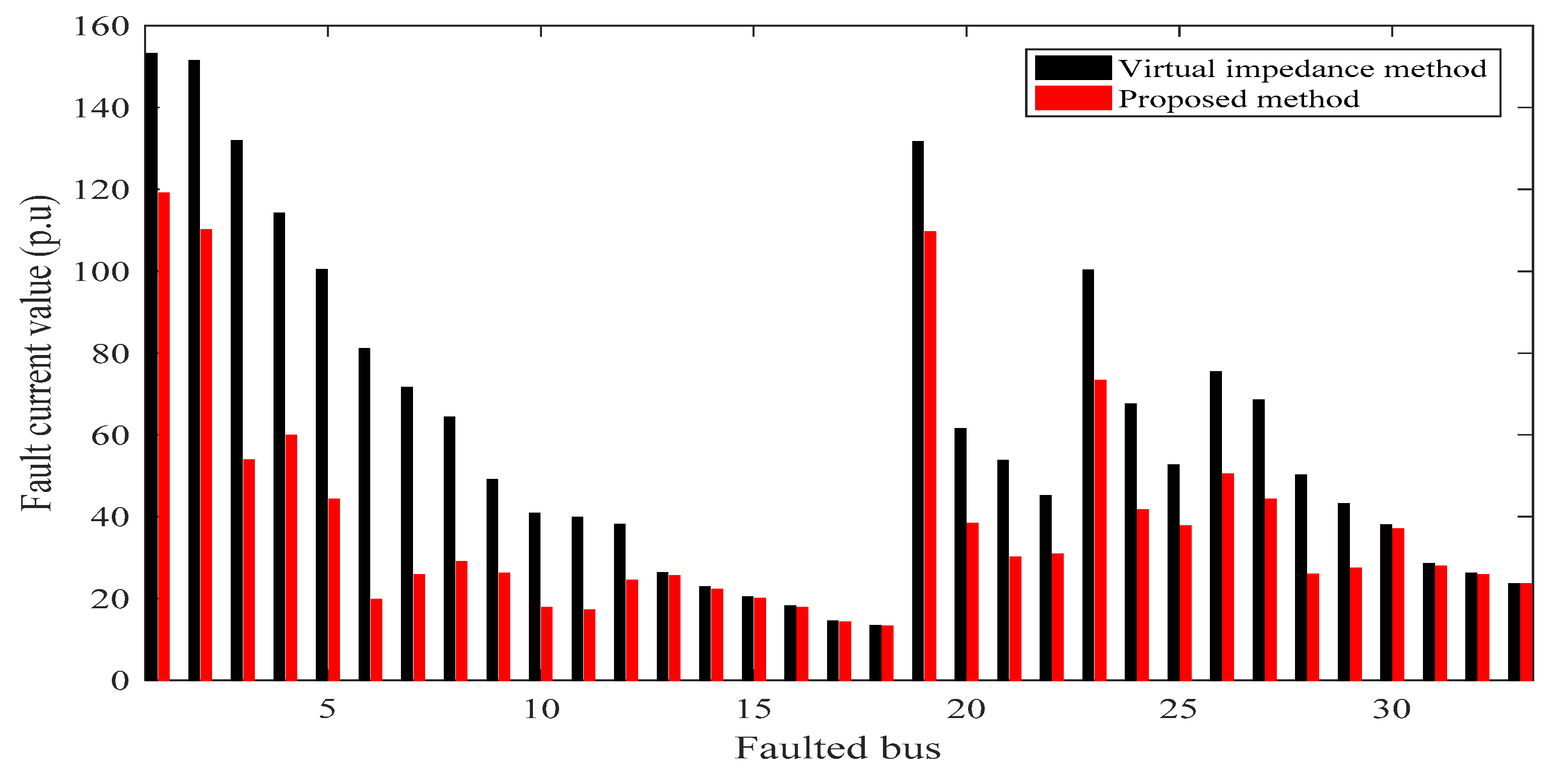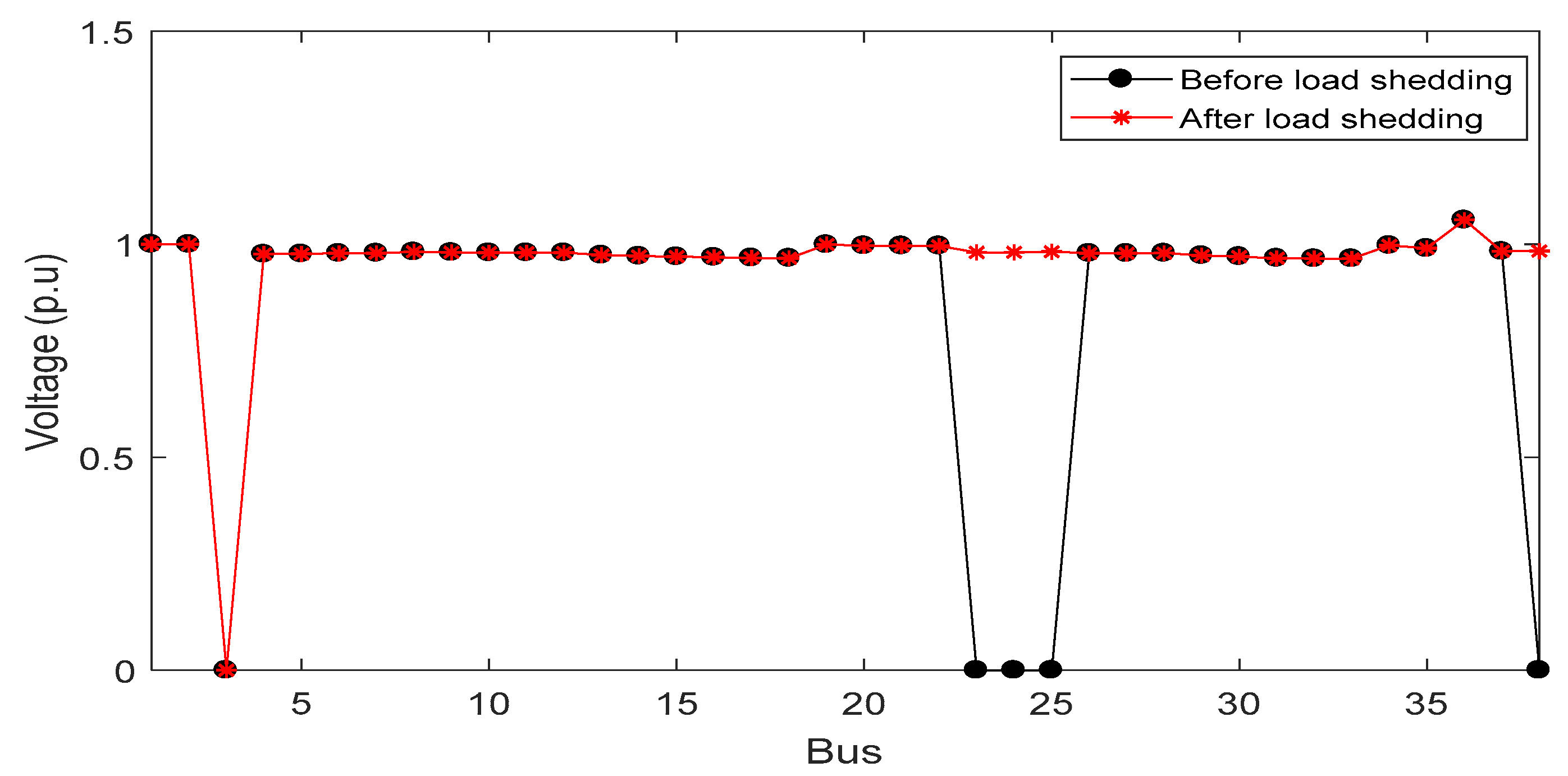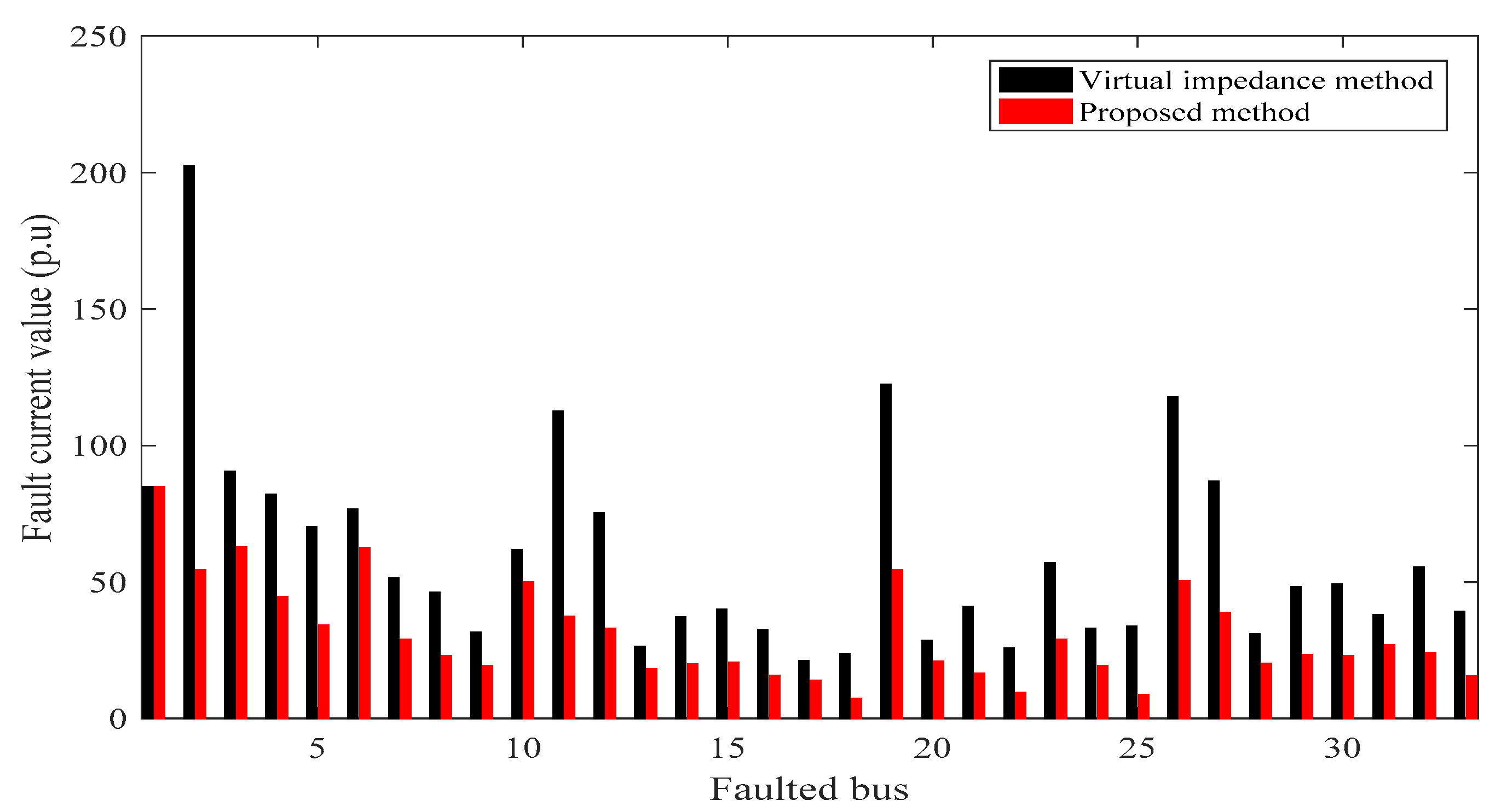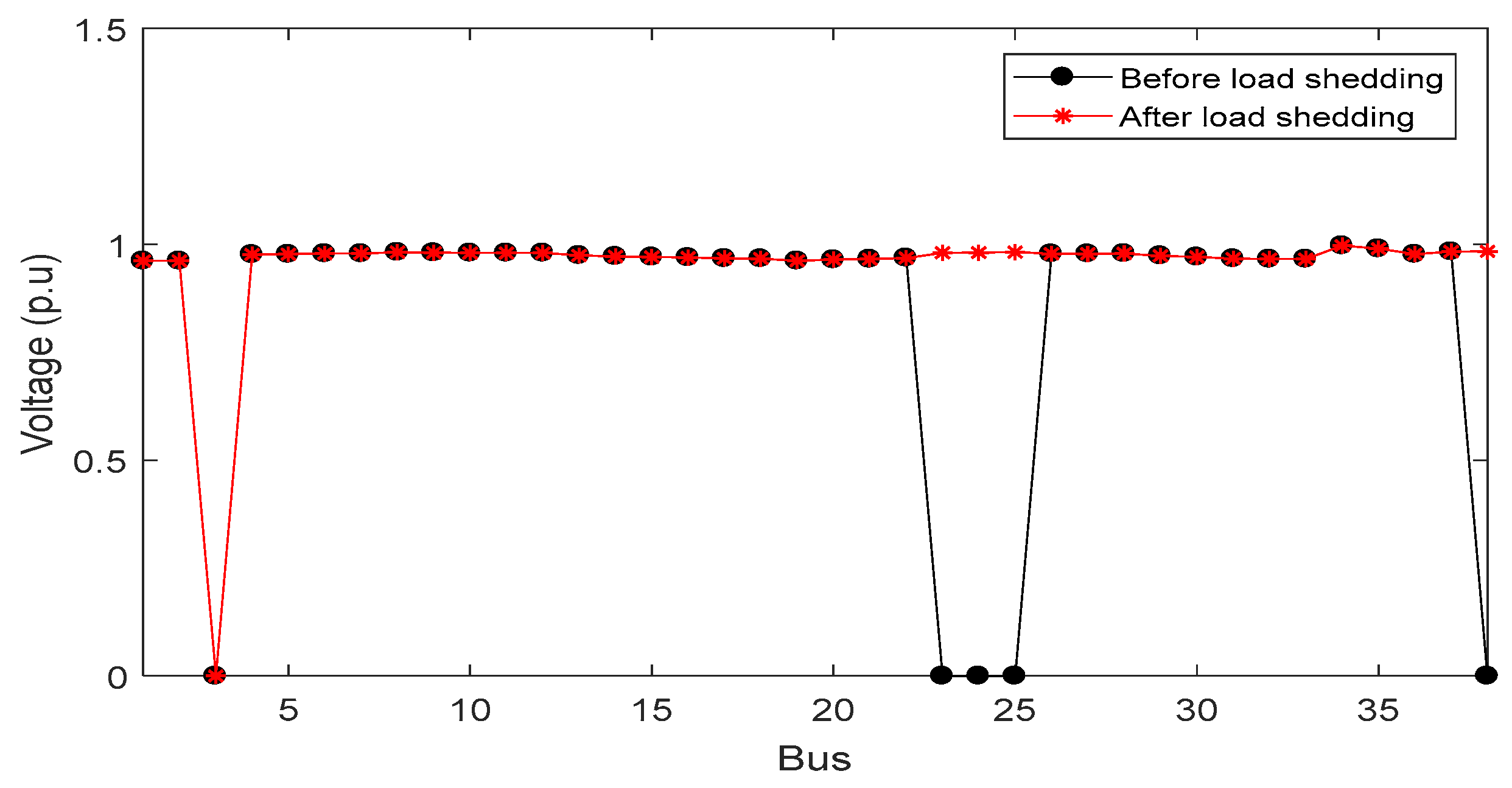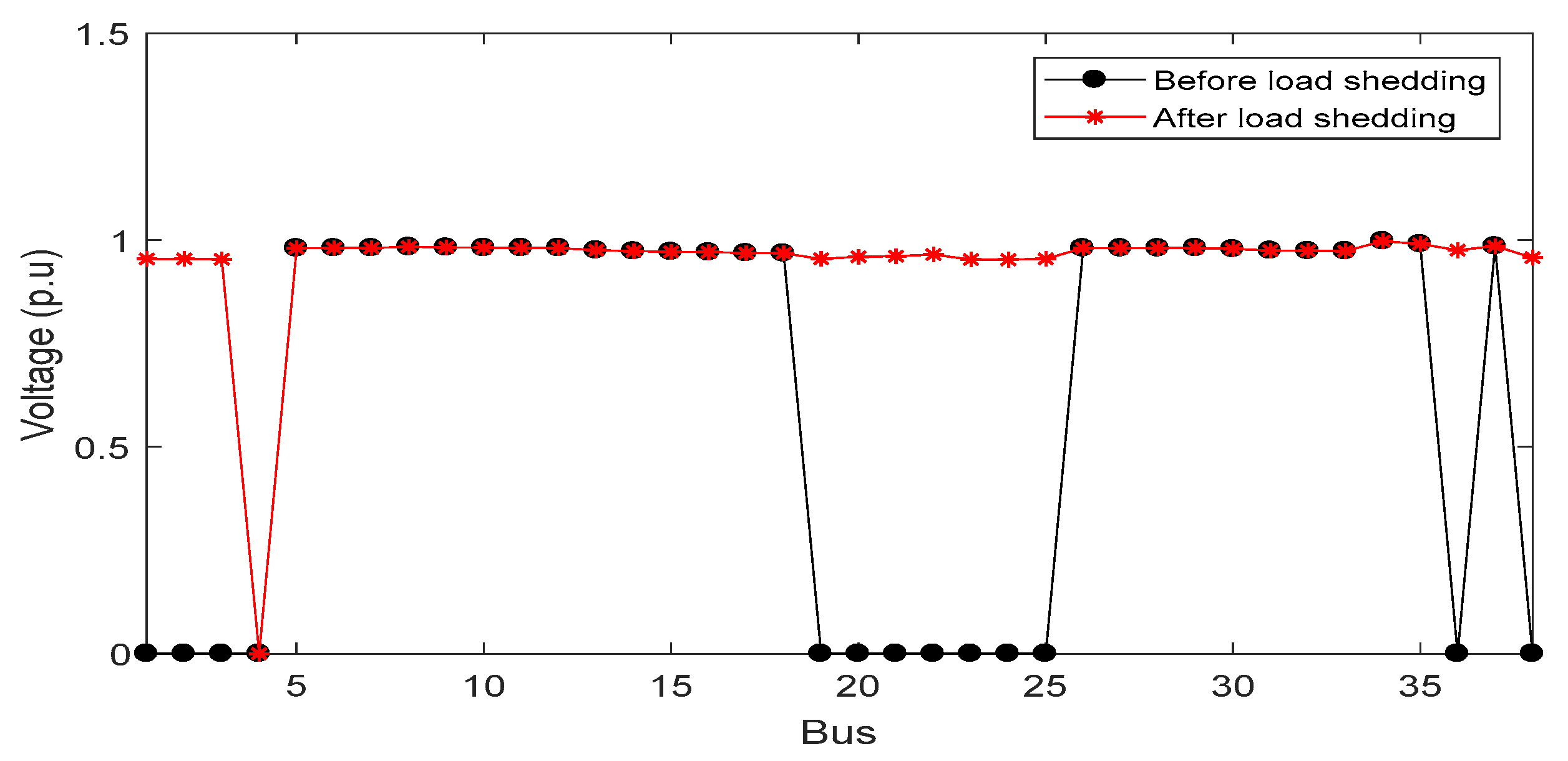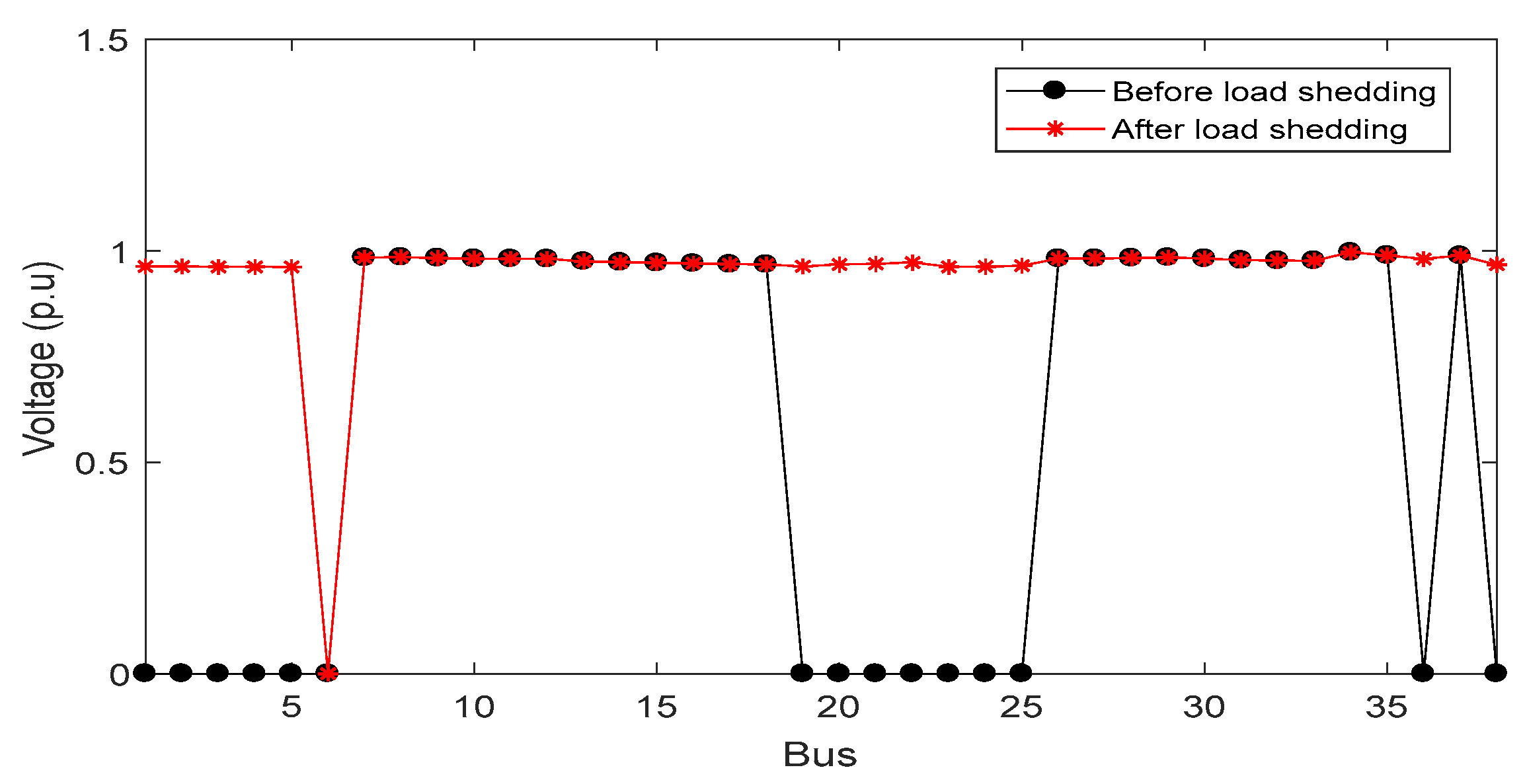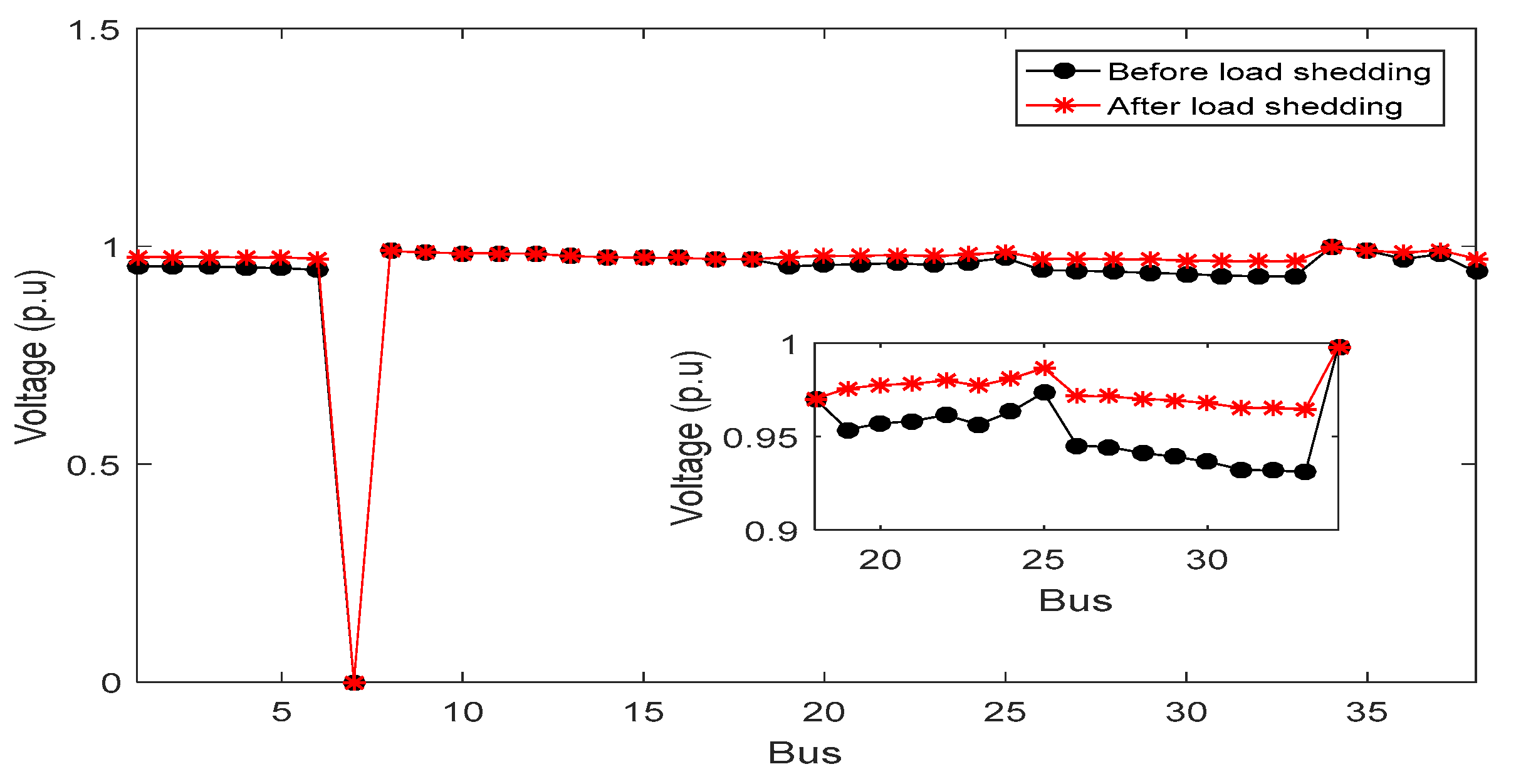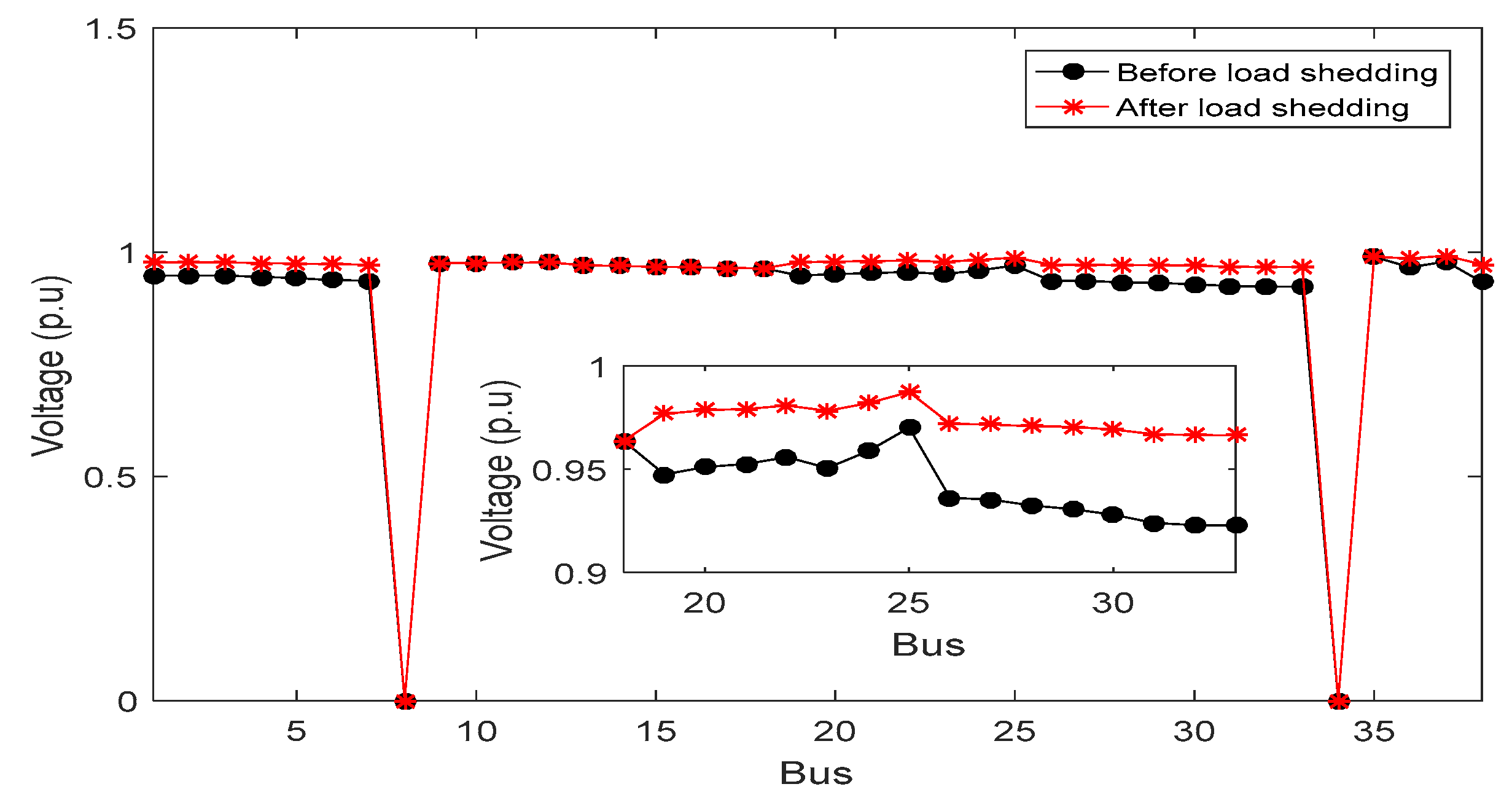1.2. Related Work
Various methods have been acquainted with controlling islanded MGs. In general, droop control is a ward control that shares the active and reactive powers of DGs. Virtual equivalent impedance is used to improve the exhibition of droop control. The adaptive virtual equivalent impedance is employed to enhance traditional virtual equivalent impedance procedures. The estimation of virtual equivalent impedance is not consistent in the adaptive virtual equivalent impedance system and fluctuates at any moment in a manner that expels impedance imbalance between various DGs. The control innovation of MG is key to the operation of the system. Developed control innovations can improve the adaptability of microgrid activity and improve control quality. The issue of fault current computation in a power system with inverter-based DG is underlined by the fault ride-through prerequisite declared in grid codes.
In [
1,
2], two model-based fault-tolerant control strategies for a diesel engine generator functioning as the main generating unit in an islanded MG comprising a hybrid wind–diesel–PV system with a battery storage system based on the master–slave strategy were proposed. In [
3], a new algorithm for calculating the short-circuit current of a droop-controlled DG was presented. Simulation results based on PSCAD/EMTDC and calculation results based on Matlab/Simulink confirm the correctness of the proposed fault models. A simplified and automated approach for calculating short-circuit currents for grid-connected AC MG has been explored for the fast and accurate calculation of the short-circuit current contribution from IBDGs and RBDGs, which was discussed in [
4]. The current limiting strategy, which can be implemented in various frames of reference, has been studied in [
5]. As a special case, wind and PV generators’ short circuit current contribution was investigated, and recommendations are provided for the island mode of microgrid operation.
An improved control system provides suitable power-sharing and reduces the flowing current while the voltage drop over the output impedance of DGs is remunerated by utilizing adaptive virtual equivalent impedance [
6]. An idea titled ‘virtual equivalent impedance’ is acquainted with executing the droop control for microgrids. By this strategy, the proportional impedance of the inverter, just as the complete corresponding impedance of the system, is with the inductive characteristic, which meets the prerequisites for the execution of P-f and Q-V control procedures [
7]. Enhancing the efficiency of DG units by increasing power-sharing using an improved droop control technique, which depends on virtual equivalent impedance, is examined in [
8]. Virtual equivalent impedance, angle and frequency droop control are significant in keeping up the system’s stability and power-sharing between DGs in MG. In MG, voltage/frequency stability and precise power-sharing are substantial undertakings. The virtual equivalent impedance strategy is acquainted early with shape-wanted output impedances in uninterruptible power frameworks. The traditional P-ω frequency droop control is right off the bat suggested to accomplish power-sharing control in parallel inverters without correspondence with joining frequency droop, and the virtual equivalent inductance technique, an adjusted proportional–derivative type of P-ω frequency droop control is acquired for improving transient stability [
9].
A virtual arrangement impedance imitates the control methodology for current-controlled standalone PV or wind ranches to upgrade the power moveability of the transmission line [
10]. This methodology can be viewed as incorporating the elements of the Realities gadgets, for example, arrangement capacitors, into the lattice side converters of PV or wind ranches by using the receptive power ability of the converters. Power stream count and short-out estimation are the premises of hypothetical research for circulation coordinated with inverter-based appropriated age. A coordinated power stream and short-out estimation technique for appropriation connected with inverter-based circulated age is proposed in [
11].
An inverter-based DG equivalent model for a distributed system’s static and error operating states was investigated, and the difference between power flow and short circuit calculation was also investigated. In [
12], the implementation of an extended power flow for DGs controlled by droop control of active and reactive power functions and virtual impedances in a low voltage (LV) microgrid was studied. The study provides an idea of the virtual equivalent impedance parameters and the higher accuracy of the reactive power flow calculation. To improve the system’s stability and prevent power coupling, the virtual equivalent impedances can be set between the converter’s outputs and the main network [
13]. A robust virtual equivalent impedance implementation method is demonstrated to mitigate voltage distortion problems caused by load harmonics instead of physical impedance effects. In addition, the idea of adaptive virtual equivalent impedance aims to improve power control performance under transient faults of the network [
13]. A virtual equivalent impedance-based short-circuit current limiter is shown for isolated MG consisting of many inverter-interfaced DGs [
14]. Virtual equivalent impedance-based short-circuit current features an adaptive, low-cost implementation and suppresses short-circuit current fluctuations during faulted AC MG recovery. Concerning the usefulness of DGs, the protection methods for MGs are more complex than for passive distribution networks.
DGs can lead to the stoppage of operation or deliberate operation of protective devices under emergency conditions. The inertia of inverter-based DGs is opposed to rotary DGs, such as small hydro generators, diesel generators, etc., and the fault current limits are reduced due to the inverter’s rated power. Various methodologies have been presented to improve the protection schemes of MGs. Virtual equivalent impedance-based short circuit current limiter is designed to suppress short circuit current in AC MGs. An approach to calculating the fault current is shown depending on the estimate of the virtual equivalent impedances of inverter-interfaced DGs in the MG [
15].
The accurate assessment of the short circuit current in grid-connected and isolated MGs with different types of loads (dynamic or static) using three detection strategies (the traditional method based on the representation of the power system by the source voltage and Thevenin impedance, the IEC standard and rectification coefficients strategy for calculating and the virtual equivalent impedance method) has been studied in [
16]. The algorithm for calculating the fault current for such a network is described in [
17]. The algorithm corrects the traditional short circuit calculation technique using power flow-based calculation. As a method of equivalent voltage source at the fault site, an approach is used to calculate short-circuit currents in electrical distribution networks [
18,
19]. The IEC 60909 specification applies, according to which an equivalent voltage source replaces the fault.
From the studies presented above, the equivalent model of an inverter-based generator handles well when calculating the power flow. The current specific situation with inverter DGs was not considered. At the same time, the inverter-interfaced DG could be modeled as the current source, which has already been mentioned in some studies. However, the models of current sources proposed in these works are ideal for a simplified analysis of the organization of current release. Thus, many research studies have been investigated the model of DG during the fault but the short-circuit current contribution of DG cannot controlled within the inverter current limit of 2 p.u.
The method for assessing the probability of risk in the power supply is due to faults of the system’s protection relay, which considers the probability of a malfunction in relay protection systems. The availability and suitability of the risk assessment method for the protection relay of systems were tested on two models studied in [
20]. Power systems can be affected by unforeseen and unavoidable faults and failures, making safety assessment a serious issue that requires significant research work [
21]. A probabilistic risk assessment of the types and cases of deterioration in power quality that may arise due to the high integration of photovoltaic generation in the low voltage distribution network is performed in [
22]. Ref. [
23] investigated a static security study to select a post-shutdown plan and load-shedding strategy to achieve the energy balance of subsystems.
